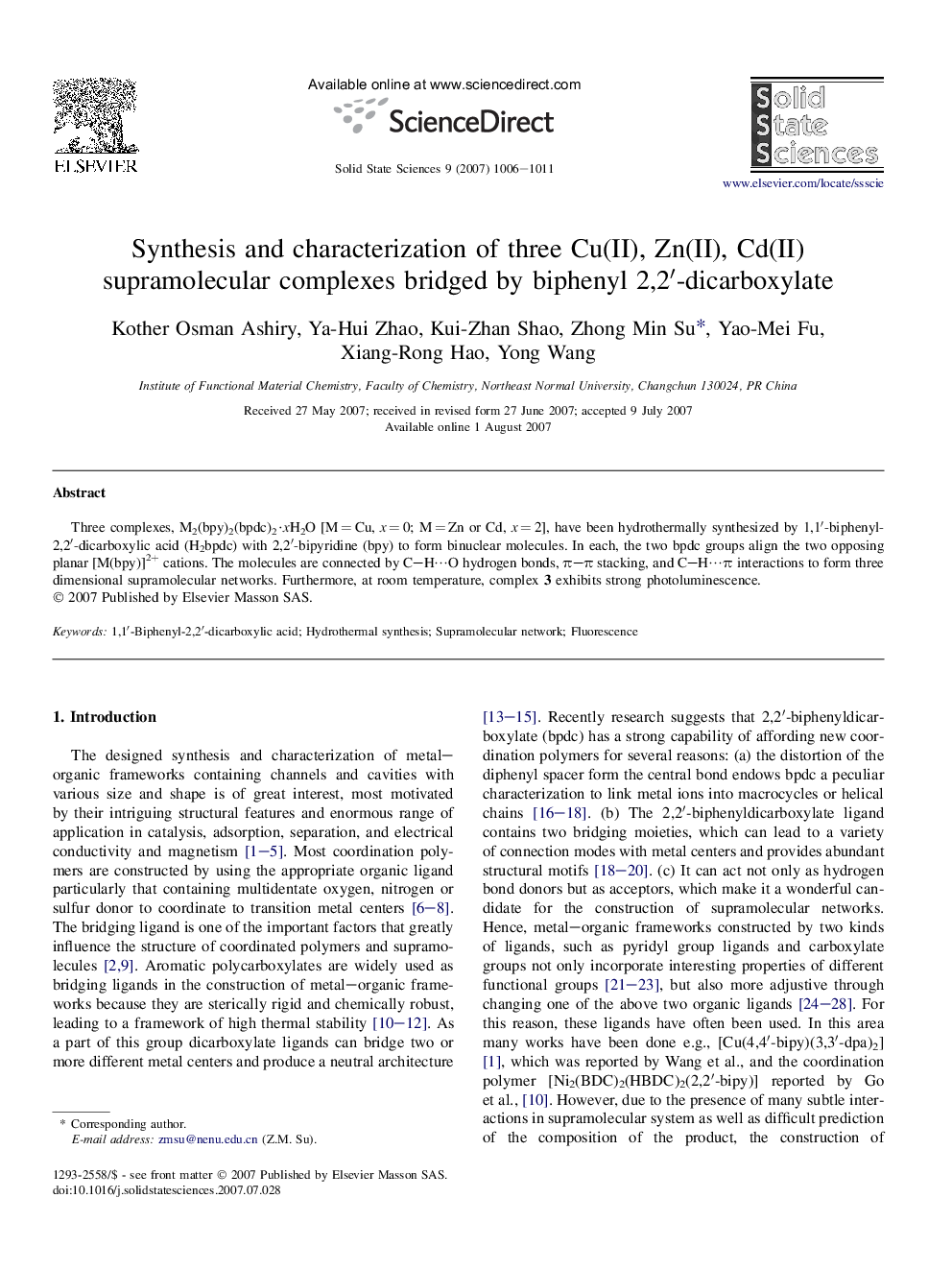| Article ID | Journal | Published Year | Pages | File Type |
|---|---|---|---|---|
| 1506598 | Solid State Sciences | 2007 | 6 Pages |
Three complexes, M2(bpy)2(bpdc)2·xH2O [M = Cu, x = 0; M = Zn or Cd, x = 2], have been hydrothermally synthesized by 1,1′-biphenyl-2,2′-dicarboxylic acid (H2bpdc) with 2,2′-bipyridine (bpy) to form binuclear molecules. In each, the two bpdc groups align the two opposing planar [M(bpy)]2+ cations. The molecules are connected by C–H⋯O hydrogen bonds, π–π stacking, and C–H⋯π interactions to form three dimensional supramolecular networks. Furthermore, at room temperature, complex 3 exhibits strong photoluminescence.
Graphical abstractReactions of Cu(II), Zn(II), or Cd(II) and 1,1′-biphenyl-2,2′-dicarboxylic acid (H2bpdc) with 2,2′-bipyridine (bpy) form three binuclear molecules complexes. The molecules are connected by C–H⋯O hydrogen bonds, π–π stacking, and C–H⋯π interactions to form three dimensional supramolecular networks. Moreover, compound 3 exhibits strong green fluorescent emission in solid state at room temperature. Figure optionsDownload full-size imageDownload as PowerPoint slide
